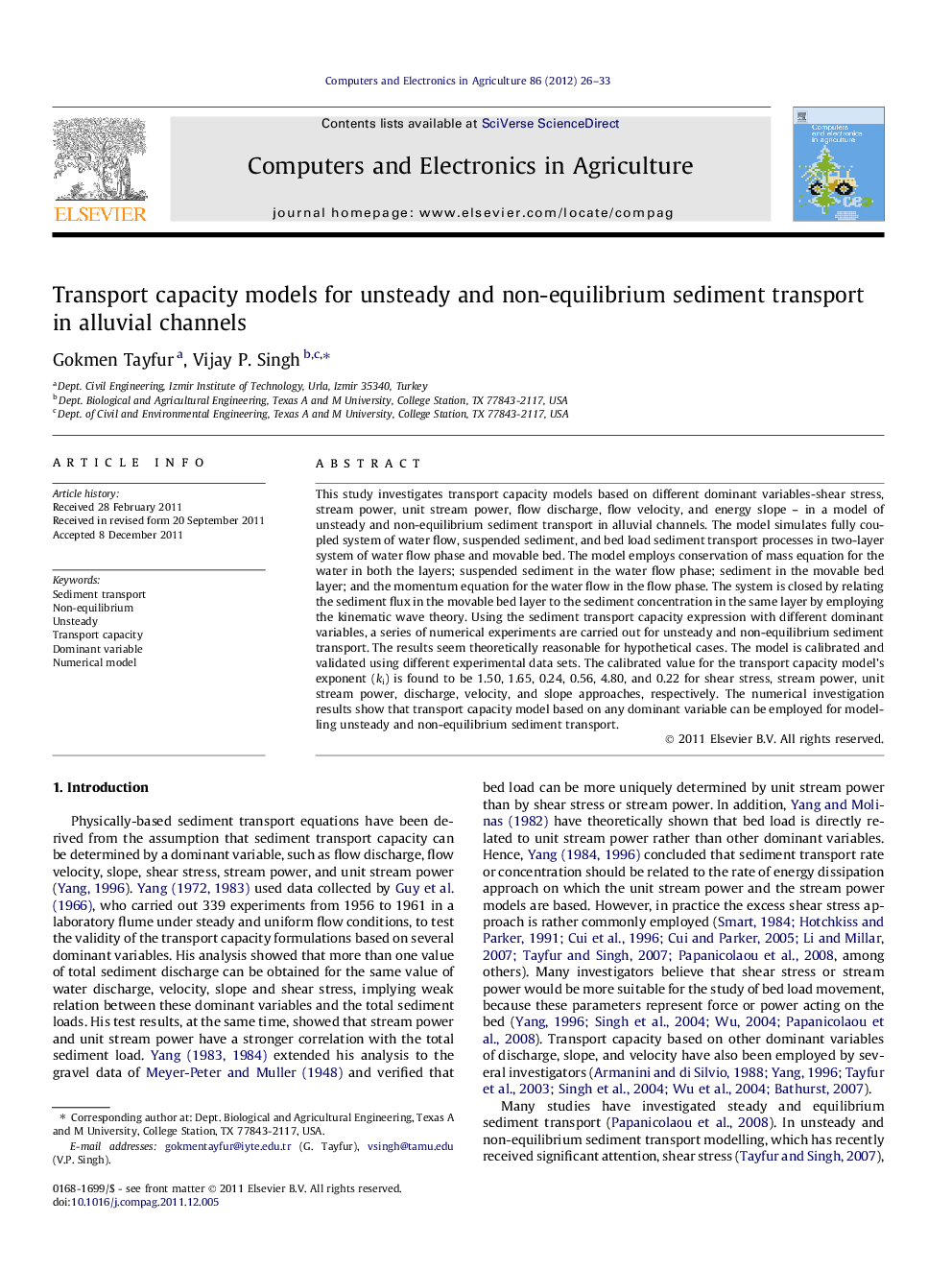| Article ID | Journal | Published Year | Pages | File Type |
|---|---|---|---|---|
| 84439 | Computers and Electronics in Agriculture | 2012 | 8 Pages |
This study investigates transport capacity models based on different dominant variables-shear stress, stream power, unit stream power, flow discharge, flow velocity, and energy slope – in a model of unsteady and non-equilibrium sediment transport in alluvial channels. The model simulates fully coupled system of water flow, suspended sediment, and bed load sediment transport processes in two-layer system of water flow phase and movable bed. The model employs conservation of mass equation for the water in both the layers; suspended sediment in the water flow phase; sediment in the movable bed layer; and the momentum equation for the water flow in the flow phase. The system is closed by relating the sediment flux in the movable bed layer to the sediment concentration in the same layer by employing the kinematic wave theory. Using the sediment transport capacity expression with different dominant variables, a series of numerical experiments are carried out for unsteady and non-equilibrium sediment transport. The results seem theoretically reasonable for hypothetical cases. The model is calibrated and validated using different experimental data sets. The calibrated value for the transport capacity model’s exponent (ki) is found to be 1.50, 1.65, 0.24, 0.56, 4.80, and 0.22 for shear stress, stream power, unit stream power, discharge, velocity, and slope approaches, respectively. The numerical investigation results show that transport capacity model based on any dominant variable can be employed for modelling unsteady and non-equilibrium sediment transport.
► Shear and stream power, discharge and slope determine channel transport capacity. ► The study couples water flow, suspended sediment, and bed load sediment transport. ► Transport capacity model exponent is found to between 0.21 and 4.83. ► Results show that sediment transport can be determined using a dominant variable.
